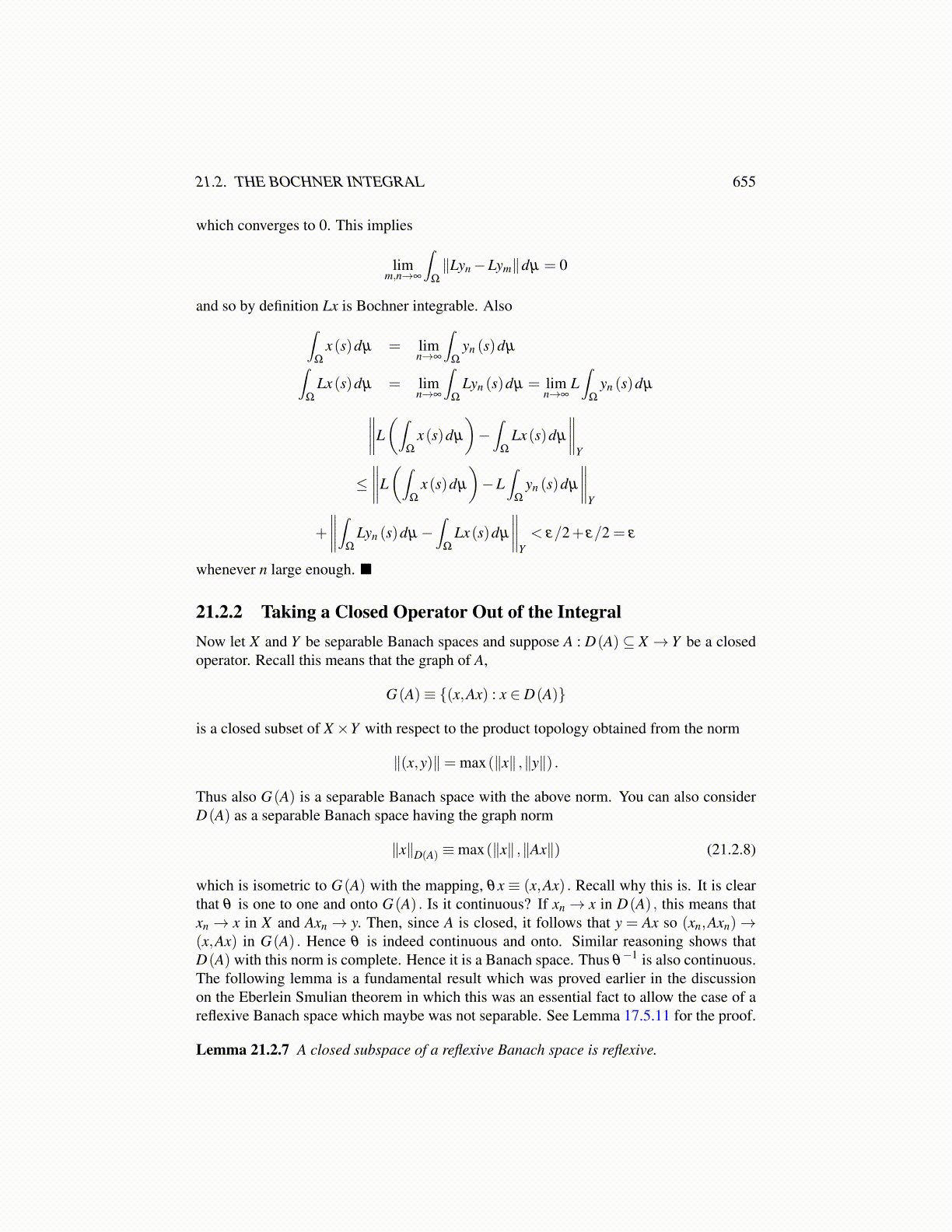
21.2. THE BOCHNER INTEGRAL 655
which converges to 0. This implies
limm,n→∞
∫Ω
∥Lyn−Lym∥dµ = 0
and so by definition Lx is Bochner integrable. Also∫Ω
x(s)dµ = limn→∞
∫Ω
yn (s)dµ∫Ω
Lx(s)dµ = limn→∞
∫Ω
Lyn (s)dµ = limn→∞
L∫
Ω
yn (s)dµ
∥∥∥∥L(∫
Ω
x(s)dµ
)−∫
Ω
Lx(s)dµ
∥∥∥∥Y
≤∥∥∥∥L(∫
Ω
x(s)dµ
)−L
∫Ω
yn (s)dµ
∥∥∥∥Y
+
∥∥∥∥∫Ω
Lyn (s)dµ−∫
Ω
Lx(s)dµ
∥∥∥∥Y< ε/2+ ε/2 = ε
whenever n large enough.
21.2.2 Taking a Closed Operator Out of the IntegralNow let X and Y be separable Banach spaces and suppose A : D(A) ⊆ X → Y be a closedoperator. Recall this means that the graph of A,
G(A)≡ {(x,Ax) : x ∈ D(A)}
is a closed subset of X×Y with respect to the product topology obtained from the norm
∥(x,y)∥= max(∥x∥ ,∥y∥) .
Thus also G(A) is a separable Banach space with the above norm. You can also considerD(A) as a separable Banach space having the graph norm
∥x∥D(A) ≡max(∥x∥ ,∥Ax∥) (21.2.8)
which is isometric to G(A) with the mapping, θx ≡ (x,Ax) . Recall why this is. It is clearthat θ is one to one and onto G(A) . Is it continuous? If xn→ x in D(A) , this means thatxn → x in X and Axn → y. Then, since A is closed, it follows that y = Ax so (xn,Axn)→(x,Ax) in G(A) . Hence θ is indeed continuous and onto. Similar reasoning shows thatD(A) with this norm is complete. Hence it is a Banach space. Thus θ
−1 is also continuous.The following lemma is a fundamental result which was proved earlier in the discussionon the Eberlein Smulian theorem in which this was an essential fact to allow the case of areflexive Banach space which maybe was not separable. See Lemma 17.5.11 for the proof.
Lemma 21.2.7 A closed subspace of a reflexive Banach space is reflexive.